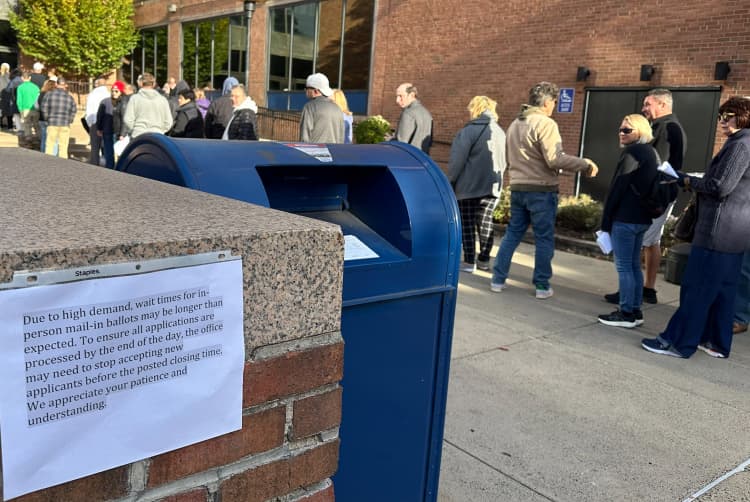Please Don’t Pay (Much) Attention to Early Voting Numbers
Every two years around this time, impatience begins to set in among election watchers. After all, we’ve been watching candidate recruitment, primary elections, and poll developments for, well, just short of two years now, and we are ready for some data.
Every two years around this time, we finally get it in the form of early voting data. Like manna, these data seem heaven-sent, tempting those who analyze elections into making predictions about the future.
And, every two years around this time, I find myself writing the same column with the same message: Don’t do that. It is not manna. It is more akin to a poisoned chalice offered to a thirsty man.
Until a few decades ago, American elections were held on a single day. Gradually, states embraced an early voting period, allowing citizens to cast their ballots weeks – sometimes months – in advance of the actual election. The idea, then, is that by checking the racial/partisan composition of the early vote data, we can begin to get a sense of how the year is shaping up.
Traditionally, this has been the province of liberal analysts, who see strong Democratic turnout in the voting numbers and proclaim that the polls are suggesting a good year for them. Last year, they were even correct! But if you suggest early voting shows that the polls are understating Democratic strength enough times, sooner or later, you will be correct.
This year, however, Republicans are celebrating, as the data show relatively weak Democratic turnout in many states, particularly among non-white voters. This, they suggest, demonstrates Republican strength in the electorate.
To see why this is a problem, it is useful to think of a party’s vote total as a part of an equation: The number of votes cast early times the party’s share of the early vote, plus the number of votes cast on Election Day times the party’s share of the Election Day vote. If you do this for both parties, you can calculate a winner.
Here’s the rub: We have only one of those four numbers. All we know is the number of votes being cast early. We might guess at a party’s vote share among the early votes by registration data, but even this is a fraught endeavor since we don’t know how registered independents are voting (if the state has party registration at all).
We also know nothing about Election Day turnout. Making things even more complicated: Election Day turnout and early voting turnout don’t exist independently of one another. In 2016 and 2020, Donald Trump was actively encouraging Republicans to avoid early voting. What looked like terrible Republican performances among early votes turned out to be Trump voters turning out in droves on Election Day.
This year, things are different. Republicans are actively encouraging their voters to turn out early. So maybe what we’re seeing in states like North Carolina and Nevada is Republican enthusiasm in early voting that will result in fewer Election Day voters turning out. In other words, the strong Republican performances in early voting might cause a smaller Republican Election Day vote.
Because of this, it’s easy to read your own preferences into early voting data. In retrospect, the 2016 early vote data hinted at the weakness in turnout among black voters that would doom Hillary Clinton’s campaign. But it was the type of thing that was difficult to discern unless you wanted to.
Campaigns have a better read on this because they know which voters have voted and know whether they are traditional Election Day voters or if they always vote early. In other words, the campaigns know whether they are just eating into their Election Day vote. Unsurprisingly, they can’t be counted on to share that information with us accurately.
There is, however, one exception to this rule. In Nevada, the early vote dwarfs the Election Day vote. Something like 90% of the vote was cast early in 2020. Yes, that was the COVID year, but in 2022, 80% of the vote was cast early. In other words, in Nevada the Election Day vote generally isn’t large enough to radically overcome an early vote deficit for a party.
Jon Ralston does yeoman’s work every two years interpreting the early vote, so if you simply cannot wait a week, I would advise you to head over to his place. Bottom line: The Republican surge in early voting is historic and is a cause of real concern for Democrats, though there’s a real possibility that Democrats are overperforming among independents and that the Election Day vote will be even smaller than in the past.
But my basic advice is: Chill. We will know soon enough – with real data – what is happening in this election.
Latest Senate Race Polling
Explore the latest polling for elections that will decide control of the Senate in 2024

